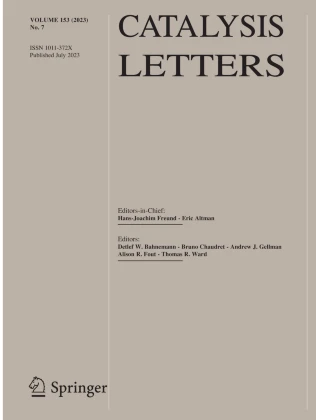Synthesis of K-Cr@alumina Catalysts for Isobutane Dehydrogenation and Membrane Reactor Applications
Abstract
In this study, it was aimed to enrich the feed stream in the FCC (Fluid Catalytic Cracking) unit outlet by isobutane dehydrogenation. A gas mixture consisting of 15 mol% isobutane, 15 mol% isobutene, 15 mol% hydrogen, and 55 mol% helium was used as the feed stream. Reactions were performed in a fixed bed reactor system containing a Pd alloy membrane by creating a pressure difference of 70 kPa between the two sides of the membrane at 550 °C and 600 °C. Catalysts containing 8% Cr by mass and a Cr/K ratio of three were prepared by impregnation technique using alumina supports. The highest amount of monochromate was determined in the catalyst where K was loaded onto the support first. It is known that the most active form for dehydrogenation reactions in chromium-based catalysts is monochromate. It was shown that monochromatic structures were increased by adding potassium. The equilibrium conversions were exceeded at both temperatures. In the catalytic tests carried out at WHSV (Weight Hourly Space Velocity) values corresponding to two different retention times (0.3 h−1 and 0.5 h−1), lower isobutene yield values were obtained when the retention time was increased. The amount of monochromate in the catalyst structure was preserved with the help of water formed during the reaction. The decrease in isobutene yield values during the reaction was explained by isobutene decomposition and coke formation. It was also shown that the excess hydrogen in the medium caused the hydrogenation of propane as well as isobutane hydrogenation.
Graphical abstract


 求助内容:
求助内容: 应助结果提醒方式:
应助结果提醒方式:


